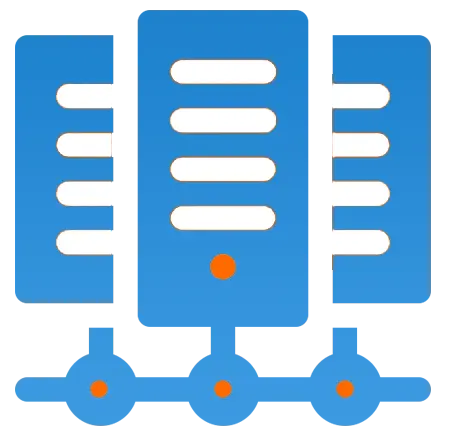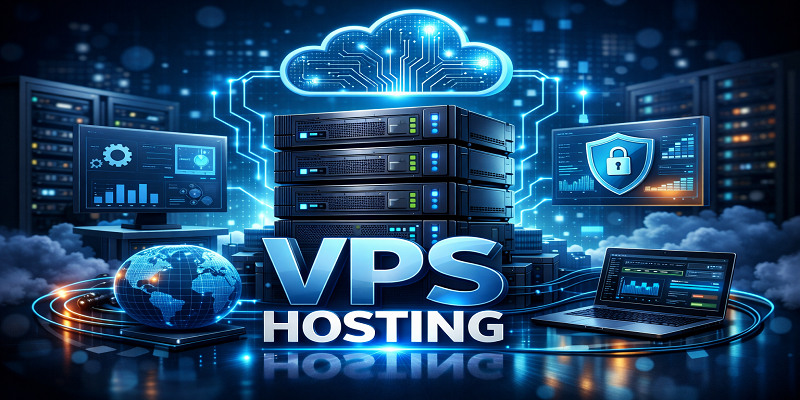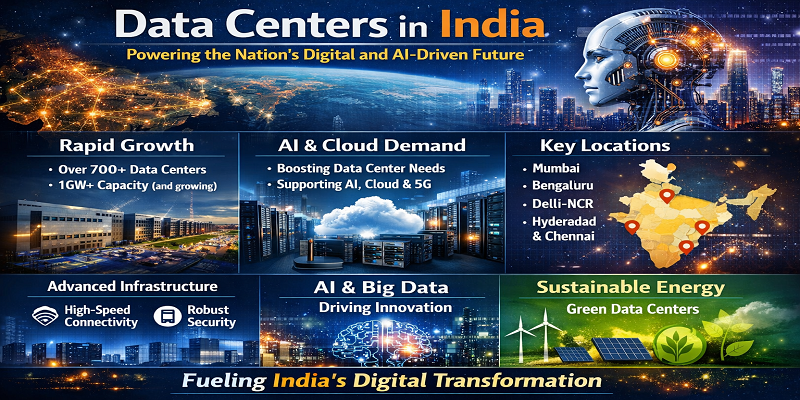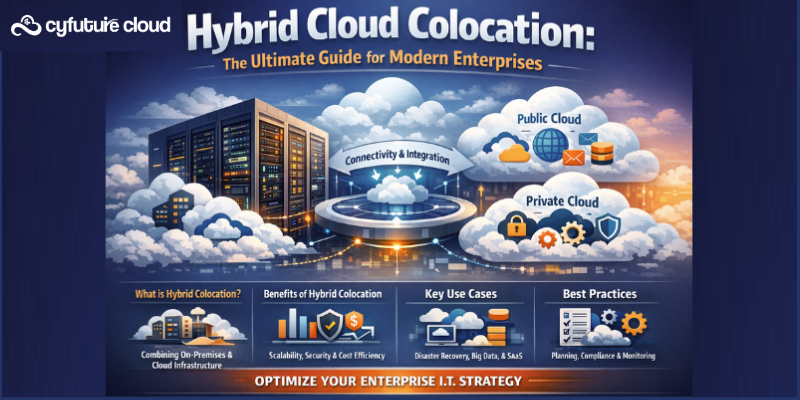Get 69% Off on Cloud Hosting : Claim Your Offer Now!
- Products
-
Compute
Compute
- Predefined TemplatesChoose from a library of predefined templates to deploy virtual machines!
- Custom TemplatesUse Cyfuture Cloud custom templates to create new VMs in a cloud computing environment
- Spot Machines/ Machines on Flex ModelAffordable compute instances suitable for batch jobs and fault-tolerant workloads.
- Shielded ComputingProtect enterprise workloads from threats like remote attacks, privilege escalation, and malicious insiders with Shielded Computing
- GPU CloudGet access to graphics processing units (GPUs) through a Cyfuture cloud infrastructure
- vAppsHost applications and services, or create a test or development environment with Cyfuture Cloud vApps, powered by VMware
- Serverless ComputingNo need to worry about provisioning or managing servers, switch to Serverless Computing with Cyfuture Cloud
- HPCHigh-Performance Computing
- BaremetalBare metal refers to a type of cloud computing service that provides access to dedicated physical servers, rather than virtualized servers.
-
Storage
Storage
- Standard StorageGet access to low-latency access to data and a high level of reliability with Cyfuture Cloud standard storage service
- Nearline StorageStore data at a lower cost without compromising on the level of availability with Nearline
- Coldline StorageStore infrequently used data at low cost with Cyfuture Cloud coldline storage
- Archival StorageStore data in a long-term, durable manner with Cyfuture Cloud archival storage service
-
Database
Database
- MS SQLStore and manage a wide range of applications with Cyfuture Cloud MS SQL
- MariaDBStore and manage data with the cloud with enhanced speed and reliability
- MongoDBNow, store and manage large amounts of data in the cloud with Cyfuture Cloud MongoDB
- Redis CacheStore and retrieve large amounts of data quickly with Cyfuture Cloud Redis Cache
-
Automation
Automation
-
Containers
Containers
- KubernetesNow deploy and manage your applications more efficiently and effectively with the Cyfuture Cloud Kubernetes service
- MicroservicesDesign a cloud application that is multilingual, easily scalable, easy to maintain and deploy, highly available, and minimizes failures using Cyfuture Cloud microservices
-
Operations
Operations
- Real-time Monitoring & Logging ServicesMonitor & track the performance of your applications with real-time monitoring & logging services offered by Cyfuture Cloud
- Infra-maintenance & OptimizationEnsure that your organization is functioning properly with Cyfuture Cloud
- Application Performance ServiceOptimize the performance of your applications over cloud with us
- Database Performance ServiceOptimize the performance of databases over the cloud with us
- Security Managed ServiceProtect your systems and data from security threats with us!
- Back-up As a ServiceStore and manage backups of data in the cloud with Cyfuture Cloud Backup as a Service
- Data Back-up & RestoreStore and manage backups of your data in the cloud with us
- Remote Back-upStore and manage backups in the cloud with remote backup service with Cyfuture Cloud
- Disaster RecoveryStore copies of your data and applications in the cloud and use them to recover in the event of a disaster with the disaster recovery service offered by us
-
Networking
Networking
- Load BalancerEnsure that applications deployed across cloud environments are available, secure, and responsive with an easy, modern approach to load balancing
- Virtual Data CenterNo need to build and maintain a physical data center. It’s time for the virtual data center
- Private LinkPrivate Link is a service offered by Cyfuture Cloud that enables businesses to securely connect their on-premises network to Cyfuture Cloud's network over a private network connection
- Private CircuitGain a high level of security and privacy with private circuits
- VPN GatewaySecurely connect your on-premises network to our network over the internet with VPN Gateway
- CDNGet high availability and performance by distributing the service spatially relative to end users with CDN
-
Media
-
Analytics
Analytics
-
Security
Security
-
Network Firewall
- DNATTranslate destination IP address when connecting from public IP address to a private IP address with DNAT
- SNATWith SNAT, allow traffic from a private network to go to the internet
- WAFProtect your applications from any malicious activity with Cyfuture Cloud WAF service
- DDoSSave your organization from DoSS attacks with Cyfuture Cloud
- IPS/ IDSMonitor and prevent your cloud-based network & infrastructure with IPS/ IDS service by Cyfuture Cloud
- Anti-Virus & Anti-MalwareProtect your cloud-based network & infrastructure with antivirus and antimalware services by Cyfuture Cloud
- Threat EmulationTest the effectiveness of cloud security system with Cyfuture Cloud threat emulation service
- SIEM & SOARMonitor and respond to security threats with SIEM & SOAR services offered by Cyfuture Cloud
- Multi-Factor AuthenticationNow provide an additional layer of security to prevent unauthorized users from accessing your cloud account, even when the password has been stolen!
- SSLSecure data transmission over web browsers with SSL service offered by Cyfuture Cloud
- Threat Detection/ Zero DayThreat detection and zero-day protection are security features that are offered by Cyfuture Cloud as a part of its security offerings
- Vulnerability AssesmentIdentify and analyze vulnerabilities and weaknesses with the Vulnerability Assessment service offered by Cyfuture Cloud
- Penetration TestingIdentify and analyze vulnerabilities and weaknesses with the Penetration Testing service offered by Cyfuture Cloud
- Cloud Key ManagementSecure storage, management, and use of cryptographic keys within a cloud environment with Cloud Key Management
- Cloud Security Posture Management serviceWith Cyfuture Cloud, you get continuous cloud security improvements and adaptations to reduce the chances of successful attacks
- Managed HSMProtect sensitive data and meet regulatory requirements for secure data storage and processing.
- Zero TrustEnsure complete security of network connections and devices over the cloud with Zero Trust Service
- IdentityManage and control access to their network resources and applications for your business with Identity service by Cyfuture Cloud
-
-
Compute
- Solutions
-
Solutions
Solutions
-
 Cloud
Hosting
Cloud
Hosting
-
 VPS
Hosting
VPS
Hosting
-
GPU Cloud
-
 Dedicated
Server
Dedicated
Server
-
 Server
Colocation
Server
Colocation
-
 Backup as a Service
Backup as a Service
-
 CDN
Network
CDN
Network
-
 Window
Cloud Hosting
Window
Cloud Hosting
-
 Linux
Cloud Hosting
Linux
Cloud Hosting
-
Managed Cloud Service
-
Storage as a Service
-
 VMware
Public Cloud
VMware
Public Cloud
-
 Multi-Cloud
Hosting
Multi-Cloud
Hosting
-
 Cloud
Server Hosting
Cloud
Server Hosting
-
 Bare
Metal Server
Bare
Metal Server
-
 Virtual
Machine
Virtual
Machine
-
 Magento
Hosting
Magento
Hosting
-
Remote Backup
-
 DevOps
DevOps
-
 Kubernetes
Kubernetes
-
 Cloud
Storage
Cloud
Storage
-
NVMe Hosting
-
 DR
as s Service
DR
as s Service
-
-
Solutions
- Marketplace
- Pricing
- Resources
- Resources
-
By Product
Use Cases
-
By Industry
- Company
-
Company
Company
-
Company
All You Need To Know About Cloud Automation
Table of Contents
Cloud automation is the use of tools and processes to automate the tasks involved in deploying and managing cloud computing resources. It involves the use of automation tools to automate tasks such as provisioning and configuring virtual machines, containers, and other resources; deploying and scaling applications; monitoring resource usage; and managing access control.
Cloud automation can help organizations to improve efficiency, reduce costs, and increase agility by automating tasks that would otherwise be done manually. It can also help to ensure that resources are used effectively, as it allows users to define and enforce policies for resource allocation and utilization.
There are many different tools and platforms available for cloud automation, including open-source tools such as Ansible and Terraform, as well as proprietary tools offered by cloud providers such as Amazon Web Services (AWS), Microsoft Azure, and Google Cloud Platform (GCP). These tools can be used to automate tasks in different types of clouds, including public clouds, private clouds, and hybrid clouds.
Cloud automation is often used in conjunction with cloud orchestration, which involves coordinating the tasks and processes involved in deploying and managing cloud computing resources. Cloud orchestration tools can be used to define and automate the tasks involved in deploying and managing cloud resources, and to monitor and manage resource usage in real time.
Common Features of Cloud Automation Tools
Here are some common features that are often found in cloud automation tools:
Resource provisioning and configuration: Cloud automation tools allow users to define and automate the provisioning and configuration of virtual machines, containers, and other resources. This can include tasks such as creating and configuring resources, setting up networking and security, and installing software.
Application deployment and scaling: Cloud automation tools can be used to deploy and scale applications in the cloud. This can involve tasks such as building and deploying code, setting up load balancers, and scaling resources up or down as needed.
Resource monitoring and management: Cloud automation tools allow users to monitor the performance and usage of the resources that are deployed in the cloud. This can include features such as real-time monitoring of resource usage, alerting users to potential issues, and providing tools for managing and optimizing resource utilization.
Access control and security: Cloud automation tools often include features for managing access control and security, such as support for identity and access management (IAM) systems, integration with security tools and platforms, and support for security best practices.
Integration with other tools and systems: Cloud automation tools often provide integration with other tools and systems, such as configuration management tools, monitoring platforms, and continuous integration/continuous delivery (CI/CD) systems. This allows users to seamlessly integrate the cloud automation tool into their overall workflow and infrastructure.
Template-based resource definition: Many cloud automation tools allow users to define and automate tasks using templates or scripts. These templates can be used to define the resources and configurations that are needed, as well as the tasks that need to be performed.
Working Process of Cloud Automation
Cloud automation involves the use of tools and processes to automate the tasks involved in deploying and managing cloud computing resources. The process of cloud automation typically involves the following steps:
– Define the resources and tasks that need to be automated: This may involve creating templates or scripts that define the specific resources and configurations that are needed, as well as the tasks that need to be performed.
– Set up the cloud automation tool: This involves installing and configuring the cloud automation tool and integrating it with the cloud provider or other systems as needed.
– Execute the tasks and processes: The cloud automation tool can then be used to execute the tasks and processes that have been defined, such as provisioning and configuring resources, deploying applications, and monitoring resource usage.
– Monitor and manage the resources: The cloud automation tool can be used to monitor the usage and performance of the resources that have been deployed, and to manage them as needed (e.g., scaling resources up or down, modifying resource configurations, etc.).
The goal of cloud automation is to automate the tasks involved in deploying and managing cloud computing resources in a way that is efficient, cost-effective, and easy to manage. Cloud automation tools can be used to automate tasks in different types of clouds, including public clouds, private clouds, and hybrid clouds.
Components of Cloud Automation
The architecture of cloud automation systems typically includes the following components:
– Cloud provider platform: This is the underlying cloud computing platform that is being used, such as Amazon Web Services (AWS), Microsoft Azure, or Google Cloud Platform (GCP). The cloud provider platform provides the infrastructure and services that are being managed by the cloud automation system.
– Cloud automation tool: This is the software tool or platform that is used to automate the tasks involved in deploying and managing cloud computing resources. Examples of cloud automation tools include Ansible, Terraform, AWS CloudFormation, Azure Resource Manager, and Google Cloud Deployment Manager.
– Configuration management tool: This is a tool that is used to manage the configuration of the resources that are deployed in the cloud. Configuration management tools allow users to define and automate the configuration of resources, and to ensure that the resources are consistent with the defined configurations.
– Monitoring platform: This is a tool or platform that is used to monitor the performance and usage of the resources that are deployed in the cloud. Monitoring tools allow users to track resource usage, identify potential issues, and take corrective action as needed.
– User interface: This is the interface that users interact with to define and execute tasks, monitor resources, and manage the cloud environment. The user interface can be a web-based interface, a command-line interface, or a combination of both.
Benefits of Cloud Automation
Here are some benefits of using cloud automation:
– Improved efficiency: Cloud automation can help organizations to improve efficiency by automating tasks that would otherwise be done manually. This can help to reduce the time and effort required to deploy and manage cloud computing resources, allowing organizations to focus on other tasks.
– Reduced costs: By automating tasks, organizations can reduce the need for manual labor, which can help to lower costs. Automation can also help to optimize resource utilization, which can further reduce costs.
– Increased agility: Cloud automation can help organizations to be more agile by allowing them to quickly and easily deploy and manage cloud computing resources. This can help organizations to respond more quickly to changing business needs, and to take advantage of new opportunities.
– Improved reliability: By automating tasks, organizations can improve the reliability of their cloud computing environment. Automation can help to ensure that tasks are completed consistently and accurately, reducing the risk of errors and downtime.
– Enhanced security: Cloud automation tools often include features for managing access control and security, such as support for identity and access management (IAM) systems, integration with security tools and platforms, and support for security best practices. This can help organizations improve the security of their cloud computing environment.
Take Away
Cloud automation is the use of tools and processes to automate the tasks involved in deploying and managing cloud computing resources. It involves the use of automation tools to automate tasks such as provisioning and configuring virtual machines, containers, and other resources; deploying and scaling applications; monitoring resource usage; and managing access control. Cloud automation can help organizations to improve efficiency, reduce costs, and increase agility by automating tasks that would otherwise be done manually. It can also help to ensure that resources are used effectively, as it allows users to define and enforce policies for resource allocation and utilization. There are many different tools and platforms available for cloud automation, including open-source tools such as ansible and Terraform, as well as proprietary tools offered by cloud providers such as Amazon Web Services (AWS), Microsoft Azure, and Google Cloud Platform (GCP). Cloud automation is often used in conjunction with cloud orchestration, which involves coordinating the tasks and processes involved in deploying and managing cloud computing resources.
Recent Post

Stay Ahead of the Curve.
Join the Cloud Movement, today!
© Cyfuture, All rights reserved.
Send this to a friend

 Pricing
Calculator
Pricing
Calculator
 Power
Power
 Utilities
Utilities VMware
Private Cloud
VMware
Private Cloud VMware
on AWS
VMware
on AWS VMware
on Azure
VMware
on Azure Service
Level Agreement
Service
Level Agreement 


















